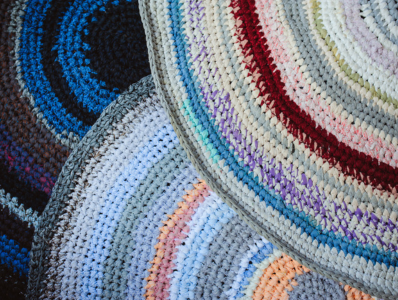Did you know the average person throws away 37 kilograms of textiles each year, and 95 per cent of those clothes could be reused or recycled? Globally, textiles waste has increased dramatically due to the rise in clothing consumption and production.
Textiles Tuesday raises awareness on the environmental consequences of clothing and textiles consumption, and provides information on how you can extend the life of your clothing.
Facts and Stats
- A circular economy for textiles has many benefits: environmental (use less resources, reduce waste); economic (drive down cost of recycling by increasing demand to save along value chain) paired or transformed.); and social (living wages in manufacturing companies).
- Currently the textiles production system operates in a linear fashion: largely non-renewable resources are extracted to produce clothes that are often used for only a short time, after which the materials are mostly sent to landfill or incinerated.
- A circular economy for textiles is designed to be restorative and regenerative: clothes, textiles, and fibres are kept at their highest value during use and return to the economy after use so to avoid becoming waste.
- The rise is production of textiles can be attributed to the rise of fast fashion, with quicker turnaround of new styles, increased number of collections offered per year, and lower prices.
- Canadians on average purchase 70 new articles of clothing a year
- Designing and producing clothes of higher quality and providing access to them through circular business models will shift the perception of clothing from being a disposable to becoming durable.
- The textile, apparel, and footwear industries have historically been a leading force of industrialization around the world. With their experience and expertise in production, marketing and sales brands are in the best position to pursue and position circular business models as attractive and fashionable options.
- Increasing the average number of times clothes are worn is the most direct lever to capture value and design out waste and pollution in the textiles system.
- If we increase demand for recycled materials through clear commitments to using more recycled input we can accelerate the uptake of clothing recycling.
- Plastics and textiles go hand-in-hand: every time we synthetic materials like polyester and nylon, tiny plastic fibres break off and up to 40% of these microfibres end of as ocean plastics. By only washing what really needs to be washed we can decrease the amount of microfibres entering our waterways and materials will last longer.
- Worldwide, clothing utilization – the average number of times a garment is worn before it ceases to be used – has decreased by 36% compared to 15 years ago.
- In the last 15 years, clothing production has approximately doubled driven by a growing middle-class population across the globe and increased per capita sale.
- Less than 1% of material used to produce clothing is recycled into new clothing, which is equal to more than USD 100 billion worth of materials lost to disposal each year.
- The textiles industry relies mostly on non-renewable resources – 98 million tonnes in total per year – including oil to produce synthetic fibres, fertilisers to grow cotton, and chemicals to produce, dye, and finish fibres and textiles.
- It is estimated that more than half of fast fashion produced is disposed of in under a year.
- After clothing is used, almost all the value in the materials they are made from is lost
- Of the total fibre input used for clothing, 87% is landfilled or incinerated, representing a lost opportunity of more than USD 100 billion annually.
- As much as 73% of material going into the clothing system is lost after final garment use, 10% is lost during garment production (e.g. as offcuts)60 and 2% is sent to landfill or incineration from garments that are produced, yet never make it to market.
- Overall, one garbage truck of textiles is landfilled or incinerated every second.
- It is estimated that 10.5 million tonnes of clothes and textiles in North America are lost to disposal every year.
- Fifteen per cent of all unwanted garments are collected while the vast majority, 85 per cent, ends up in landfills.
- Each year, people consume more than 80 billion pieces of new clothing, making the clothing industry one of the world’s biggest polluters.
- It takes 2,600 litres of water to make one new t-shirt.
- On average, we only wear 50% of our clothes – the rest sits unused in our closets.
